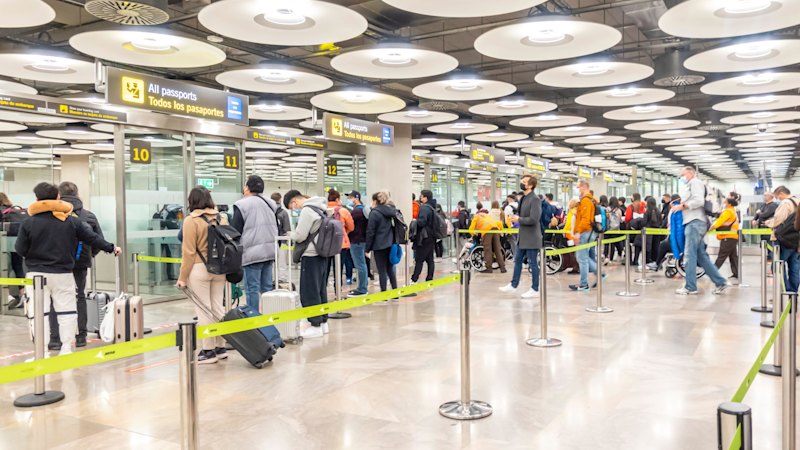
News
October 06, 2025
Europe’s new entry system starts next week. Here’s what you need to know
In the long run, it should make it quicker and easier for Australians to enter European countries. But don’t be surprised if there are a few problems.
Europe is gearing up to launch its new Entry/Exit System (EES) next week, marking a significant shift in how non-EU citizens, including Australians, will be processed at border controls. While the long-term goal is smoother and faster entry, travelers are being advised to brace themselves for potential teething problems as the system rolls out.
The EES is designed to automate and strengthen border checks for travelers from countries that don't require a visa to enter the Schengen Area. This includes Australia, the United States, the United Kingdom, and numerous others. Instead of manually stamping passports, the system will register the traveler's name, type of travel document, biometric data (fingerprints and facial images), and the date and place of entry and exit.
This digital record aims to streamline border procedures, reduce processing times in the long run, and improve security by accurately tracking entries and exits. Overstaying will be more easily detectable, helping to combat illegal immigration.
However, the introduction of any large-scale, technologically advanced system is rarely without its initial hiccups. Experts are warning travelers to expect potential delays and longer queues at border crossings as border officials and travelers alike adjust to the new procedures. The collection of biometric data, while intended to be quick, could cause bottlenecks, particularly at busy airports and land borders.
"It's a big change, and it will take time for everyone to get used to it," explains a spokesperson for a European travel association. "Travelers should factor in extra time when planning their journeys and be patient with border staff who are also learning the ropes."
Australian travelers planning a European trip are encouraged to familiarize themselves with the EES requirements and be prepared for the new registration process. Having necessary documents readily available and cooperating fully with border officials will help to minimize potential delays. While the initial phase may present some challenges, the EES promises a more efficient and secure travel experience in the long run, ultimately benefiting both travelers and European border control authorities. As the system matures and processes become more refined, crossing European borders should become a more seamless experience for Australians and other non-EU visitors.
The EES is designed to automate and strengthen border checks for travelers from countries that don't require a visa to enter the Schengen Area. This includes Australia, the United States, the United Kingdom, and numerous others. Instead of manually stamping passports, the system will register the traveler's name, type of travel document, biometric data (fingerprints and facial images), and the date and place of entry and exit.
This digital record aims to streamline border procedures, reduce processing times in the long run, and improve security by accurately tracking entries and exits. Overstaying will be more easily detectable, helping to combat illegal immigration.
However, the introduction of any large-scale, technologically advanced system is rarely without its initial hiccups. Experts are warning travelers to expect potential delays and longer queues at border crossings as border officials and travelers alike adjust to the new procedures. The collection of biometric data, while intended to be quick, could cause bottlenecks, particularly at busy airports and land borders.
"It's a big change, and it will take time for everyone to get used to it," explains a spokesperson for a European travel association. "Travelers should factor in extra time when planning their journeys and be patient with border staff who are also learning the ropes."
Australian travelers planning a European trip are encouraged to familiarize themselves with the EES requirements and be prepared for the new registration process. Having necessary documents readily available and cooperating fully with border officials will help to minimize potential delays. While the initial phase may present some challenges, the EES promises a more efficient and secure travel experience in the long run, ultimately benefiting both travelers and European border control authorities. As the system matures and processes become more refined, crossing European borders should become a more seamless experience for Australians and other non-EU visitors.
Category:
Politics